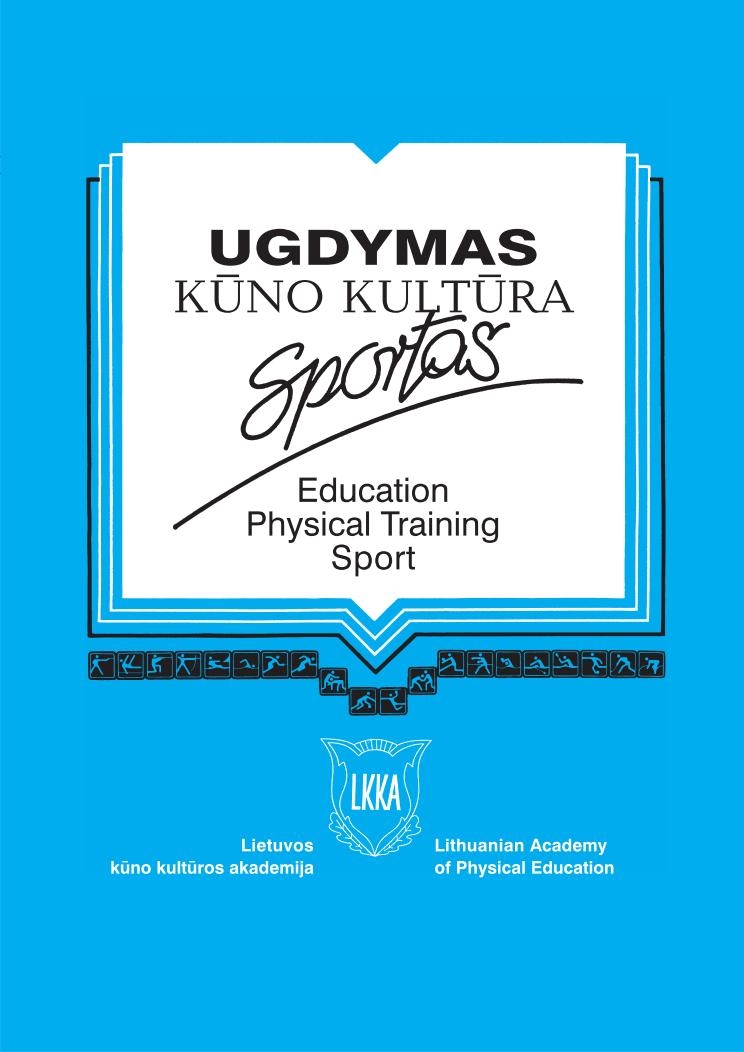Mobilization of Cardiovascular Function at Onset of Exercise and Peculiarities of Recovery in Dependence on the Type of Adaptation
Abstract
The objective of this study was to compare the peculiarities of the mobilization of cardiovascular function at onset of exercise test in dependence on the type of adaptation to physical loads. The study participants were 17 voluntary students who were not engaged in the sport training; 21 — endurance group; 19 — sprint group and 21 — combativesport group (box, judo and wrestling). The subjects underwent: 1) a Roufier test (30 squats per 45 seconds); 2) a 30- second duration maximal vertical jump test, 3) a bicycle ergometry of incremental increase in provocative workload (graded stress). A computerized ECG system “Kaunas—Workload” was employed for 12 lead ECG recording and analysis during the performance of workloads. A computerized program allowed to measure the ratio of JT and RR intervals (JT / RR) and the velocity of adaptation of cardiovascular system to exercise, i.e. the index of velocity of adaptation (VAd), by the calculation of the difference between the relative changes of JT interval and RR interval as a difference: VAd = (JTi / JT0) 100% – (RRi / RR0) 100%. The results obtained during the study show that the velocity of adaptation at onset of exercise depends on the residual effects of training but not on the type of exercise-test. The fastest adaptation at onset of exercise was in sprint group (16.3 ± 1.33%). The values of velocity of adaptation in endurance group were 19.8 ± 1.34%. The difference between sprint and endurance cohorts was statistically significant (p < 0.05). The velocity of adaptation in the group of nonathletes was the slowest — 21.4 ± 1.33%. There were no differences in the ratio JT interval and RR interval (JT / RR between cohorts at the end of graded stress, i.e. when maximal mobilization of muscular and cardiovascular systems was obtained. On the other hand the greatest difference between cohorts was revealed in a 30-second all-out maximal vertical jump test. The greatest values were in the group of non-athletes and the least in endurance group. The difference between these cohorts was statistically significant (p < 0.05). Conclusions: 1 —The velocity of adaptation of cardiovascular system at onset of exercise depends on the type of adaptation to exercise type. A faster adaptation at onset of exercise is rather characteristic of sprint and combative sports than representatives of endurance or nonathletes. 2 — The change in ratio of JT interval and RR interval (JT / RR) of ECG allows to assess the dynamics of mobilization of cardiovascular system during the workouts. 3 — A significant property of recovery after physical loads is an adequate sequence of recovery of cardiovascular system functional indicators and this sequence does not depend on the type of adaptation to exercise. The faster recovery is the ratio JT / RR, then recovery of heart rate (RR interval), then — JT interval.
Keywords: cardiovascular system, adaptation, recovery, JT interval.
Downloads
Published
Issue
Section
License
Copyright (c) 2018 Baltic Journal of Sport and Health Sciences

This work is licensed under a Creative Commons Attribution 4.0 International License.






